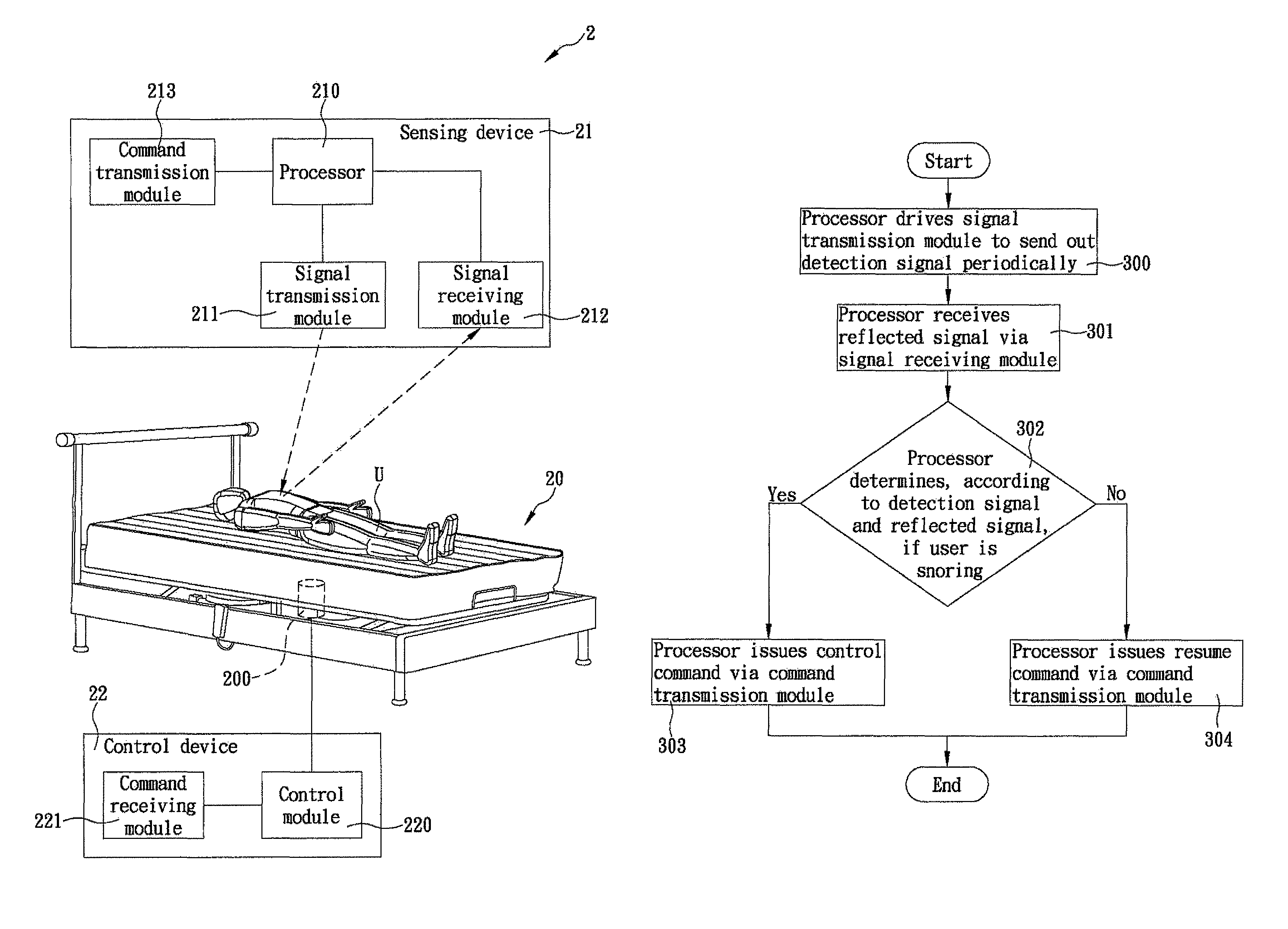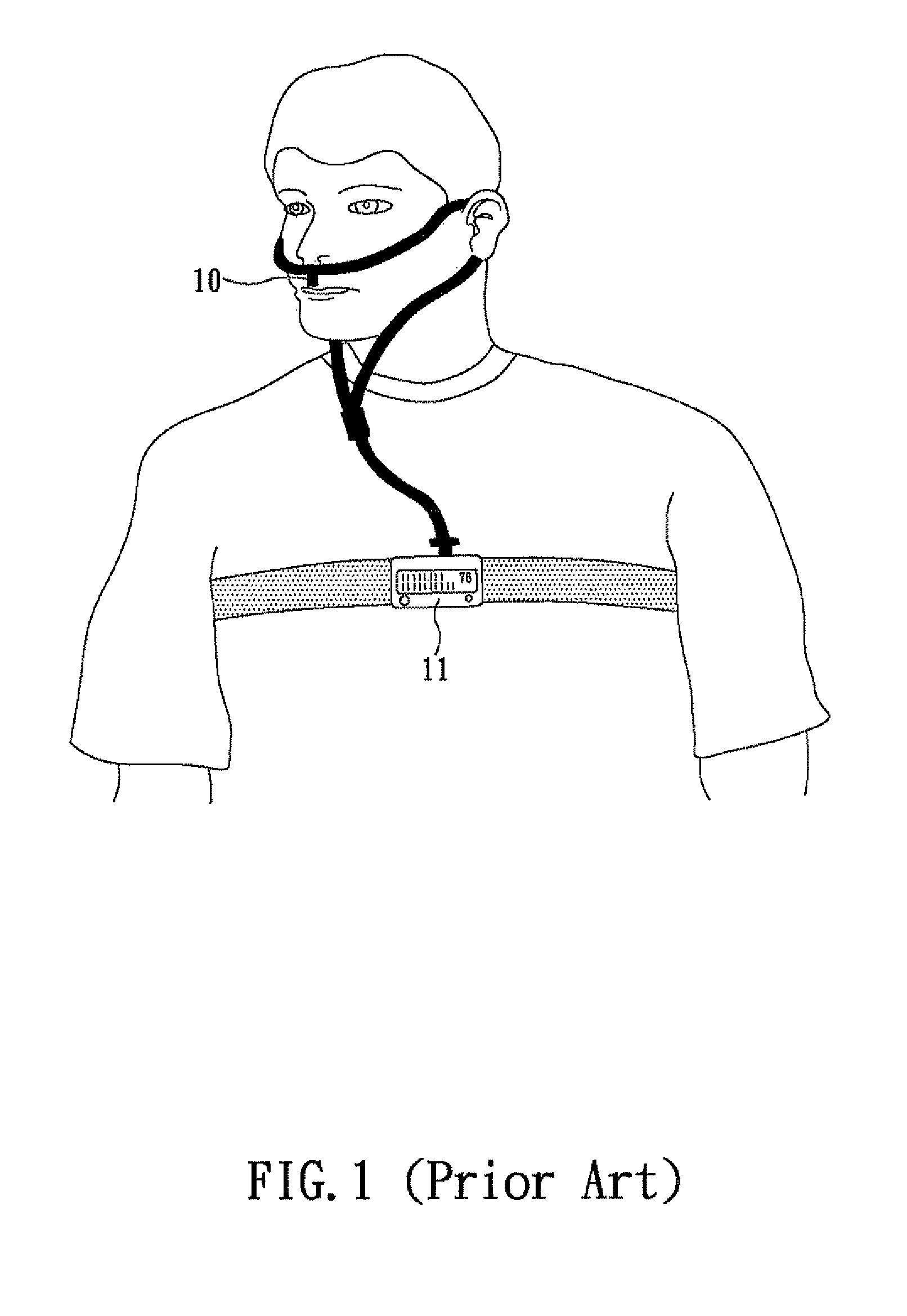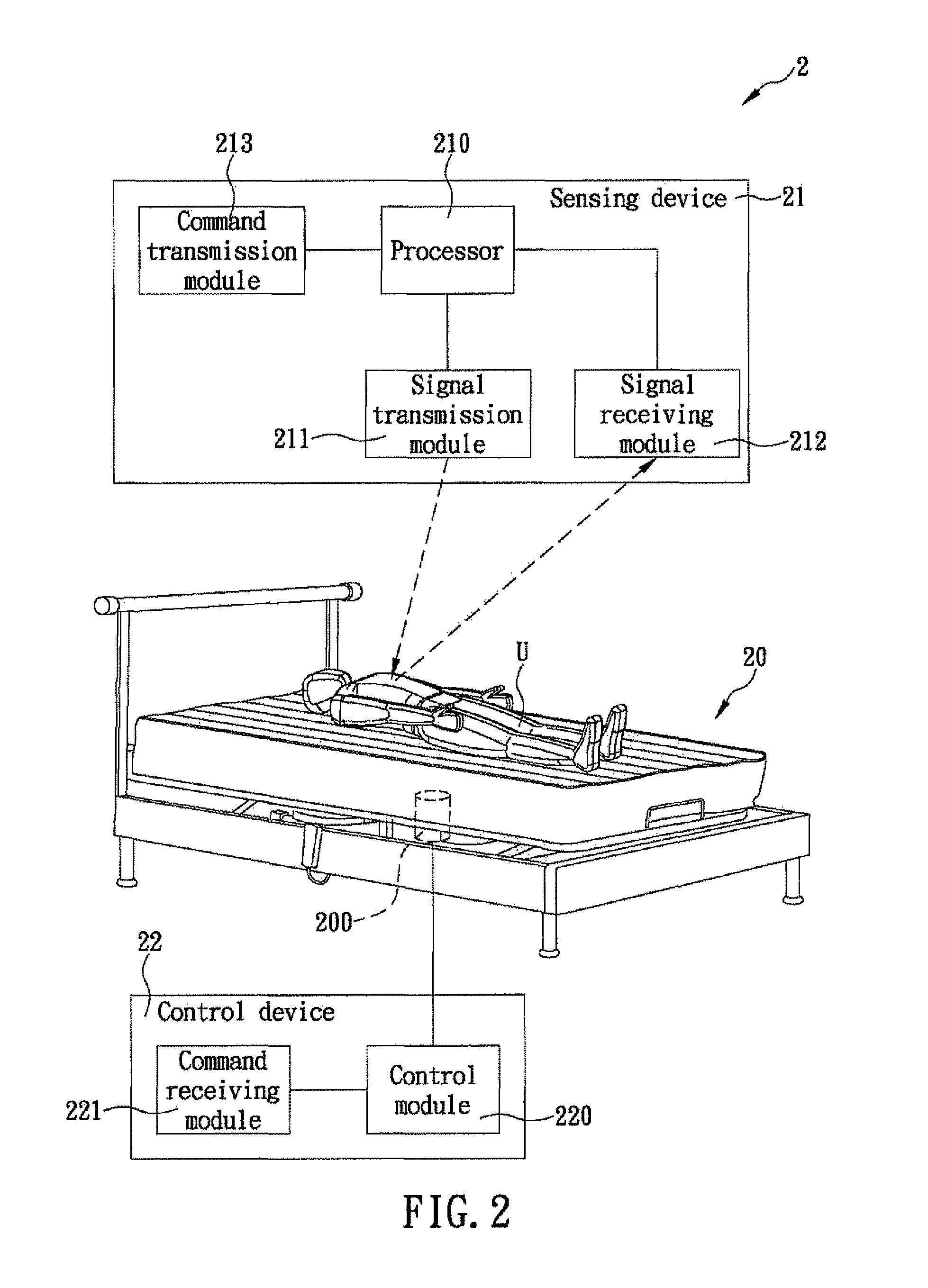Automated anti-snoring bed system
a bed system and automatic technology, applied in the field of bed systems, can solve the problems of insufficient muscle strength to maintain free flow in the respiratory tract, wearable audio sensors will not pick up undesirable background noise, and audio sensors will not work, so as to achieve the effect of effectively stopping snoring, preventing not only, and significantly reducing the production cost of the disclosed system
- Summary
- Abstract
- Description
- Claims
- Application Information
AI Technical Summary
Benefits of technology
Problems solved by technology
Method used
Image
Examples
Embodiment Construction
[0017]The inventor of the present invention has long been engaged in the research, development, and design of beds. In the process, the inventor has found that many people are bothered by snoring, sleep apnea, and like problems and therefore have poor sleeping quality. Although snoring sound detectors and airflow-based snore detectors have been developed for use by those suffering from snoring problems and sleep apnea, the users must endure the discomfort of wearing audio sensors or other accessories in order for the detectors to work. Moreover, the known snore detectors are configured only for detection but not for improving the snoring condition. While the related industry has endeavored to solve the aforesaid problems, an ideal solution has yet to be found. In consideration of this, the inventor came up with the idea of an automated anti-snoring bed system which applies a long-distance detection technique to the determination of the user's snoring condition, and which can adjust ...
PUM
 Login to View More
Login to View More Abstract
Description
Claims
Application Information
 Login to View More
Login to View More - R&D
- Intellectual Property
- Life Sciences
- Materials
- Tech Scout
- Unparalleled Data Quality
- Higher Quality Content
- 60% Fewer Hallucinations
Browse by: Latest US Patents, China's latest patents, Technical Efficacy Thesaurus, Application Domain, Technology Topic, Popular Technical Reports.
© 2025 PatSnap. All rights reserved.Legal|Privacy policy|Modern Slavery Act Transparency Statement|Sitemap|About US| Contact US: help@patsnap.com



